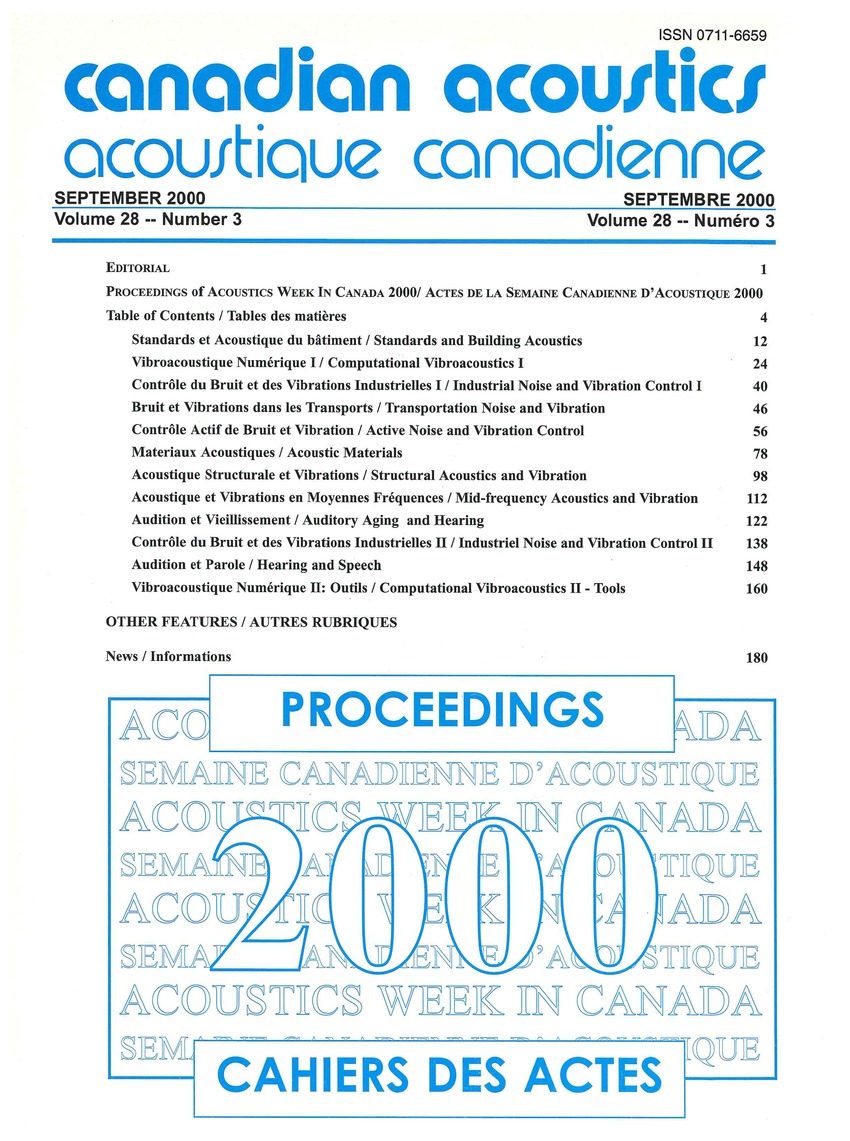Integration of acoustic absorbing porous components in vehicle environment using a novel finite element solver
Keywords:
Elastic waves, Finite element method, Integral equations, Porous materials, Vehicles, Biot's equation, Interstitial fluids, Pro-elastic materials (PEM)Abstract
A new mixed finite element formulation very well adapted to analyze the propagation of elastic and acoustic waves in porous absorbing media is presented. The proposed new formulation is based on modified Biot's equations written in terms of the skeleton displacement and the acoustic pressure in the interstitial fluid. It generalizes the previous formulation proposed by Professor Atalla & Co-authors, and has the great advantage over existing formulations of automatically satisfying all boundary conditions without having to compute surface coupling integrals at porous sub-domain interfaces. When elastic forces in the skeleton are neglected, the formulation automatically degenerates to an equivalent fluid model taking into account inertial coupling with the skeleton. This generalized mixed formulation and associated equivalent fluid model has been implemented by STRACO (France) in RAYON-PEM Solver. It is shown in this paper, that the numerical results predicted with RAYON-PEM agrees very well with experimental results using impedance tube tests and vibration measurements on multi-layered plates.Additional Files
Published
How to Cite
Issue
Section
License
Author Licensing Addendum
This Licensing Addendum ("Addendum") is entered into between the undersigned Author(s) and Canadian Acoustics journal published by the Canadian Acoustical Association (hereinafter referred to as the "Publisher"). The Author(s) and the Publisher agree as follows:
-
Retained Rights: The Author(s) retain(s) the following rights:
- The right to reproduce, distribute, and publicly display the Work on the Author's personal website or the website of the Author's institution.
- The right to use the Work in the Author's teaching activities and presentations.
- The right to include the Work in a compilation for the Author's personal use, not for sale.
-
Grant of License: The Author(s) grant(s) to the Publisher a worldwide exclusive license to publish, reproduce, distribute, and display the Work in Canadian Acoustics and any other formats and media deemed appropriate by the Publisher.
-
Attribution: The Publisher agrees to include proper attribution to the Author(s) in all publications and reproductions of the Work.
-
No Conflict: This Addendum is intended to be in harmony with, and not in conflict with, the terms and conditions of the original agreement entered into between the Author(s) and the Publisher.
-
Copyright Clause: Copyright on articles is held by the Author(s). The corresponding Author has the right to grant on behalf of all Authors and does grant on behalf of all Authors, a worldwide exclusive license to the Publisher and its licensees in perpetuity, in all forms, formats, and media (whether known now or created in the future), including but not limited to the rights to publish, reproduce, distribute, display, store, translate, create adaptations, reprints, include within collections, and create summaries, extracts, and/or abstracts of the Contribution.


